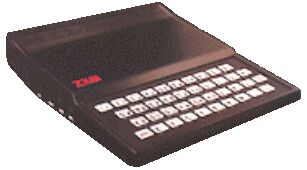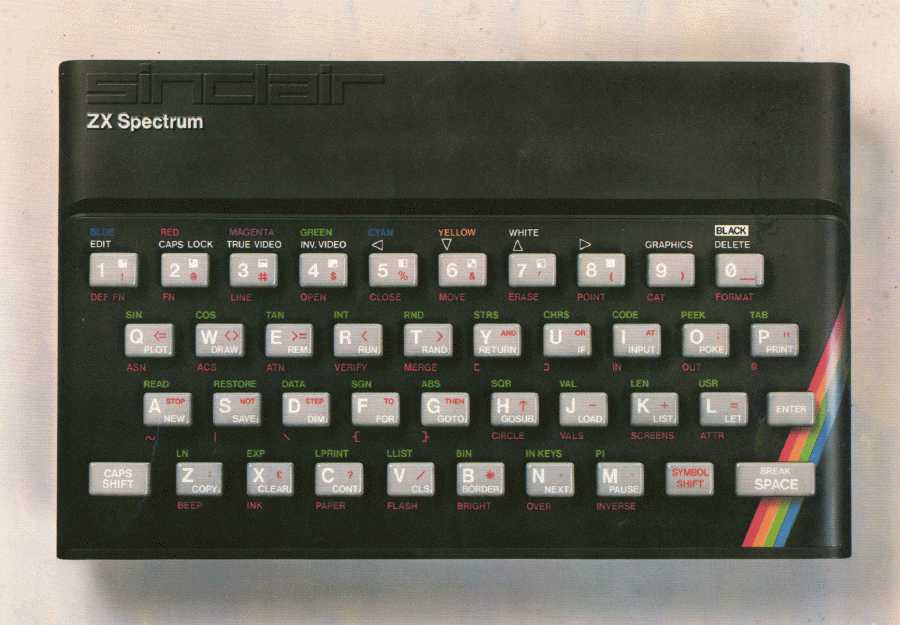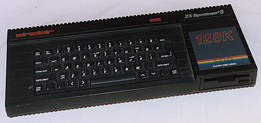My Sinclair past

This may be a trip down memory lane for others!
I first became interested in computers in 1981. At the time, I couldn't think of a serious use for them, but I thought it would be a decent thing to buy one just to muck around with.
At this time, the Sinclair ZX81 was the way to go. I bought one for what seemed to me at the time a fortune at £69.99. Having said that, it was a lot cheaper than some of the more established "home computer" makers of the time (mostly Japanese.) Not surprisingly, these competitors found that they could drop their prices virtually overnight!
The basic ZX81 had ---wait for it--- one whole kilobyte of memory (yes, 1K!) This amount of RAM soon showed itself up as being totally inadequate, certainly for BASIC programming (the Sinclairs' native tongue.) It was evident that I would have to buy the "16K RAMpack" (another £49.99,) which plugged into the computers expansion port. Well, actually a bit of the mainboard that stuck out further than the rest of it at the back, with some edge connector type fingers on it! This could be annoying, because as the connection wasn't brilliant, if you inadvertently wiggled the rampack you may have lost everything you had been working on! With this ZX81 however, I learned the essentials of BASIC programming.
Soon afterwards came the Spectrum, Sinclairs successor to the ZX81 (many people called it the ZX82!) As its name suggests, the video output of this computer was in colour, and the basic Spectrum was supplied with 16K. Sixteen Kilobytes soon proved to be totally inadequate, but there was an escape route for people bold enough to take their computer to pieces. Many companies supplied an upgrade kit of IC's that you could plug in to unoccupied sockets on the motherboard, and replace some existing chips with new. This enabled you to triple the RAM to a staggering 48K!

Around this time, some software companies were starting to produce serious games for the Spectrum. I have fond memories of staying up half the night playing games like Manic Minor. This was one of the all time classics for the Spectrum. Along with this were games like Jet Set Willy, and the Melbourne House "Horace" series (Hungry Horace, Horace goes skiing etc...) Computing was starting to become involving.
Along comes the Spectrum +2. Wow, this was supplied with a mind blowing 128K of RAM. It was the first Spectrum with a proper tactile type keyboard, rather than a membrane type pad. The real trouble of the Spectrums storage system was highlighted with this marque. Yes... Tape storage. How many people reading this owned a "Speccy", and bought games for it on cassette only to find that after about 10 minutes or so loading the games, there was some "drop-out" on the tape, punctuated with an error message on the screen? That was so frustrating.
Shortly afterwards, the Spectrum +3 was introduced, with an integral, although proprietary type disk drive. I never actually owned one of these, as I bought an external floppy drive for my +2 (plugged into the expansion port!)
Another problem with the Spectrum series of computers was, because they were made to a budget, any 8x8 pixel portion of the display could have only two colours (attributes) allocated to it. This made the programmers job pretty hard.
I wish that I had kept my original ZX81 to show to future generations! It's the sort of thing to put in a "time capsule".
Some while ago, I downloaded a Spectrum Emulator and a few of the old games. I very occasionally play them just for "old times' sake". It must also show what a sad person I am?!

Epilogue:
The Sinclair story is a bit sad really. It shows how a company can be so innovative, but not have the necessary marketing and financial guidance (and dare I say it, a touch of government support) to back it up. Like so many British companies, it failed in the end because of that. The ill fated Sinclair C5 (electric car) is a case in point. Some people laughed about these at the time, but the C5 should have opened the gates to a new way of personal transportation.